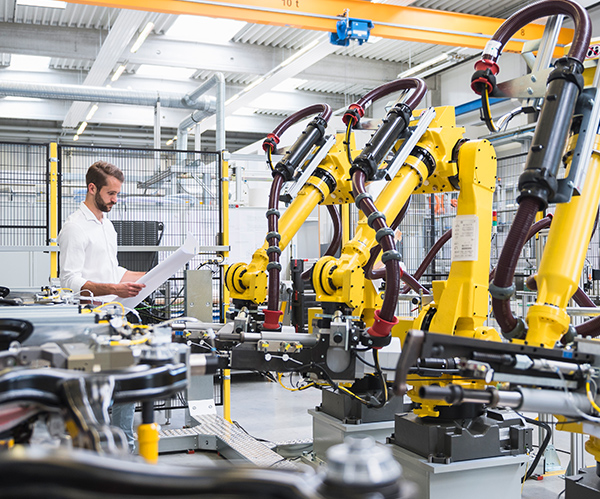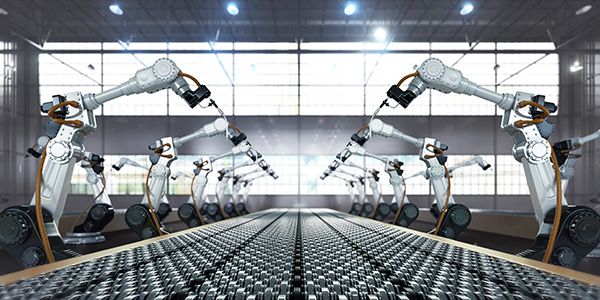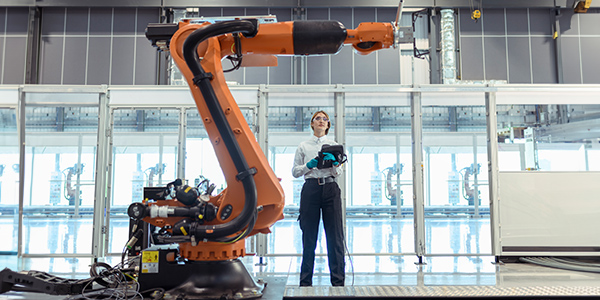Working with established supply chain technology often feels like second nature, especially because some supply chain solutions have been helping supply chain professionals for decades. Working with the latest tech, however, can be both exciting and daunting. There are new applications and the potential for time and cost savings, higher profits, and more. But there can also be apprehension about the return on investment; user-friendliness; and the potential disruption, if not elimination, of human jobs. Sill, time and time again, technology has made supply chain management easier, helping companies advance a variety of key performance indicators and unlocking new possibilities.
With more innovations in the pipeline, supply chain technology will keep pushing organizations to new heights and possibilities. Organizations will be best equipped to take advantage of these possibilities when they are knowledgeable about the potential solutions. Read on to learn more about the fundamentals of supply chain technology, key types and resources for more information.

Supply chain technology encompasses the tools and capabilities that support supply chain operations by enabling digital transformation through more effective management of the flow of goods and materials, real-time visibility into operations, improved efficiencies, identification of capabilities, and optimization of performance across networks. Examples include software, automation, artificial intelligence (AI), the internet of things, 3D printing, robotics and more.
Although many supply chain practices have been around for centuries, the advent of computers, software, tools and models enabled industry professionals to truly plan and manage supply chain operations. In fact, the term supply chain management wasn’t coined until the 1980s, after many of these technologies were already in use.

Then, software developers focused on integrating the different facets of supply chain management and orchestrating them more efficiently with enterprise resource planning (ERP) systems, which were automating supply chains by the late 1980s. Since then, ERP has evolved and expanded to include technologies such as AI and predictive analytics. Around the same time, the U.S. military started using inventory management software to improve spare parts replenishment.
Computing and software power set the stage for adopting smarter, data-driven advancements, including data-driven AI and machine learning in the 2000s; the internet of things, smart sensors, big data, advanced analytics, blockchain, robotics and automation in the 2010s; and now autonomous technology that could potentially power driverless vehicles and autonomous robots. Other technologies — including drones, digital twins and 3D printing — open new possibilities for heightened operations and innovation.
Each new level of capabilities paves the way for even more advancements, which can reshape supply chain management. At the same time, market evolutions and disruptions create a need for innovations that solve unprecedented challenges and help companies meet new opportunities. In the near future, professionals expect more solutions related to digitization, big data and analytics, AI, visibility, risk management, cybersecurity, sustainability and resilience.

The following supply chain technologies are in use today. These brief descriptions are adapted from the ASCM Supply Chain Dictionary:

The process of layering materials to make products and components using computer data.

The autonomous or semi-autonomous inspection of data or other content using industry-leading techniques and tools to gain deeper insights, make predictions or make recommendations; advanced analytics techniques include data and text mining, pattern matching, semantic analysis, sentiment analysis, graph analysis, multivariate statistics, visualization, forecasting, machine learning, simulation and more

Computer programs that can learn and reason in a manner similar to humans

The substitution of machine work for human physical and mental work, or the use of machines for work not otherwise able to be accomplished, entailing a less continuous interaction with humans than previous equipment used for similar tasks.

A continuously growing list of records, called blocks, which are linked and secured using cryptography; each block typically contains an unalterable cryptographic hash of the previous block, a timestamp and transaction data.

Digital tools that can help an organization combine statistical forecasting techniques and judgment to construct demand estimates for products or services across the supply chain from the suppliers’ raw materials to the consumer’s needs.

An environment in which objects, animals or people are provided with unique identifiers and the ability to transfer data over a network without requiring human-to-human or human-to-computer interaction; this allows objects to be sensed and controlled remotely across existing network infrastructure, creating opportunities for more direct integration between the physical world and computer-based systems.

The process of replacing activities previously performed by humans with mechanical devices or robots that can either be operated by humans or run by a computer.
Implementing these or any other type of supply chain technology is not necessarily easy. There are a variety of roadblocks you might encounter along the way. For one, a lengthy evaluation process likely means that you will need to evaluate each type of technology to determine whether it can be applied to your business. The evaluation process can also include investigating different options on the market and selecting the choice with the best options. Also, technology typically is a sizable financial investment, so it's critical to consider return on investment.
Then, a rigorous implementation process should include connecting the technology to existing systems and preparing the data the technology needs to function. It's also important to test the technology before rolling it out to all functions. If the organization faces any talent gaps, you’ll either need to hire new team members with the appropriate technological expertise or train your existing team members to operate the technology. Your best approach is oftene to do both. With the most cutting-edge technology, though, there may not be anyone with the skills and knowledge to use it or information to conduct training. Then, you’ll have to be the researcher yourself and experiment. Along the way, a thoughtful change management process will be valuable, as humans are naturally resistant to change. They may not be eager to work with the technology and will fear that their jobs will change drastically or be eliminated by this new tool.
Each of these challenges is certainly surmountable, so don’t let them get you sidetracked.

To successfully implement technology and transform your supply chain, follow these tips:
The world of supply chain management is ever-changing, so your supply chain technology implementation likely won’t be a one-and-done initiative. Stay abreast of the latest features and evolving technology to keep pace with the market.

Technology has always been the foundation of supply chain management, and it will keep evolving to support the future needs of the field. Emerging technologies that are just on the periphery of the market will mature and gain adoption. More mature technology will be updated or retired to make room for the latest advancements. And human work will continue to change as supply chain professionals learn to leverage these new tools.
The next supply chain technologies in development likely will support the top trends on the horizon. This will involve:
In time, working with each new wave of technology will feel like second nature too. With the right knowledge and evaluation of different technologies, you’ll be equipped to adopt and keep pace with the latest technology while continually transforming your supply chain to meet market needs.

There’s more to explore in the world of supply chain management. To learn more about practical applications of supply chain management and what to expect in real-world scenarios, check out our:
Simply subscribe today and you’ll receive valuable supply chain insights from the top leaders in the industry that will help you do your job better, faster, and more efficiently. From industry news to insider tips and trends, Signals delivers a quick read on the latest information on supply chain management right to your inbox.
